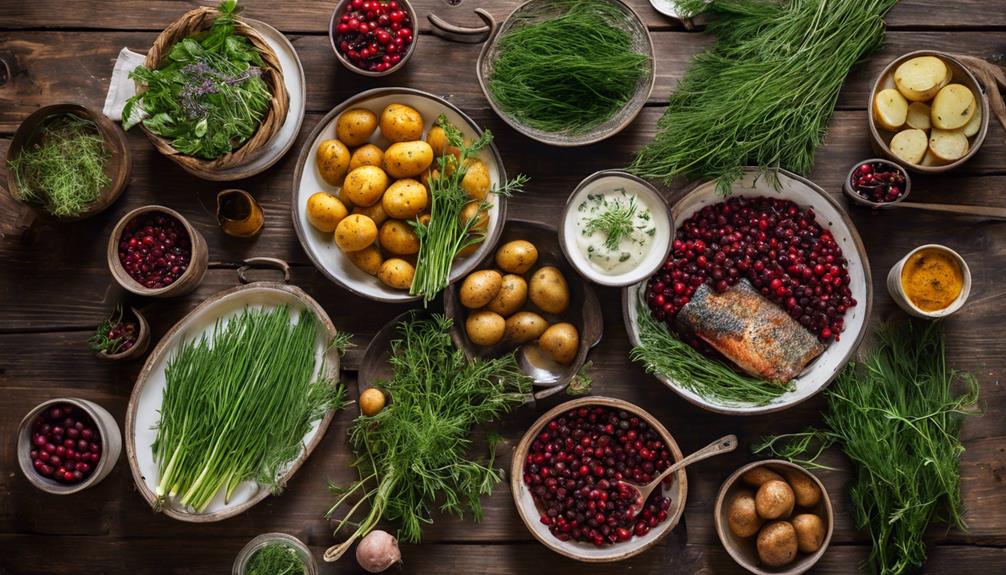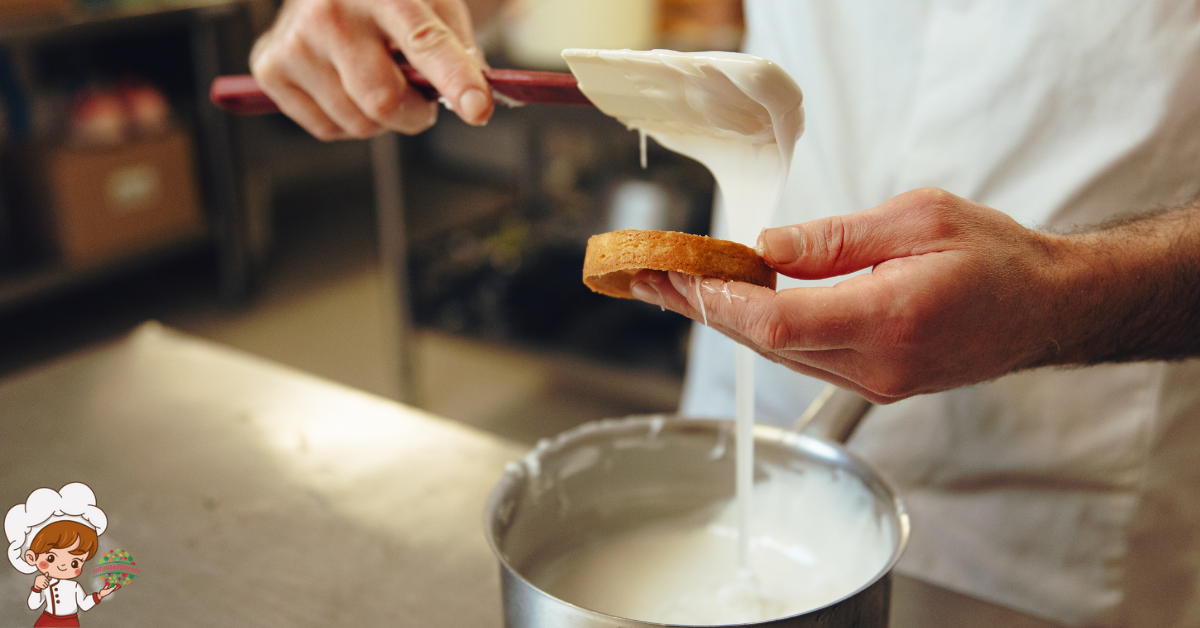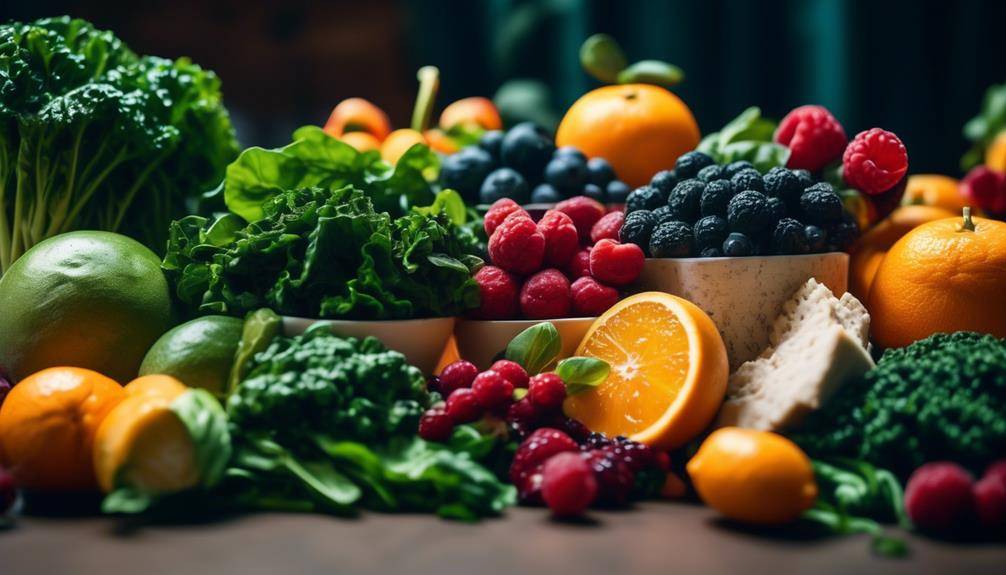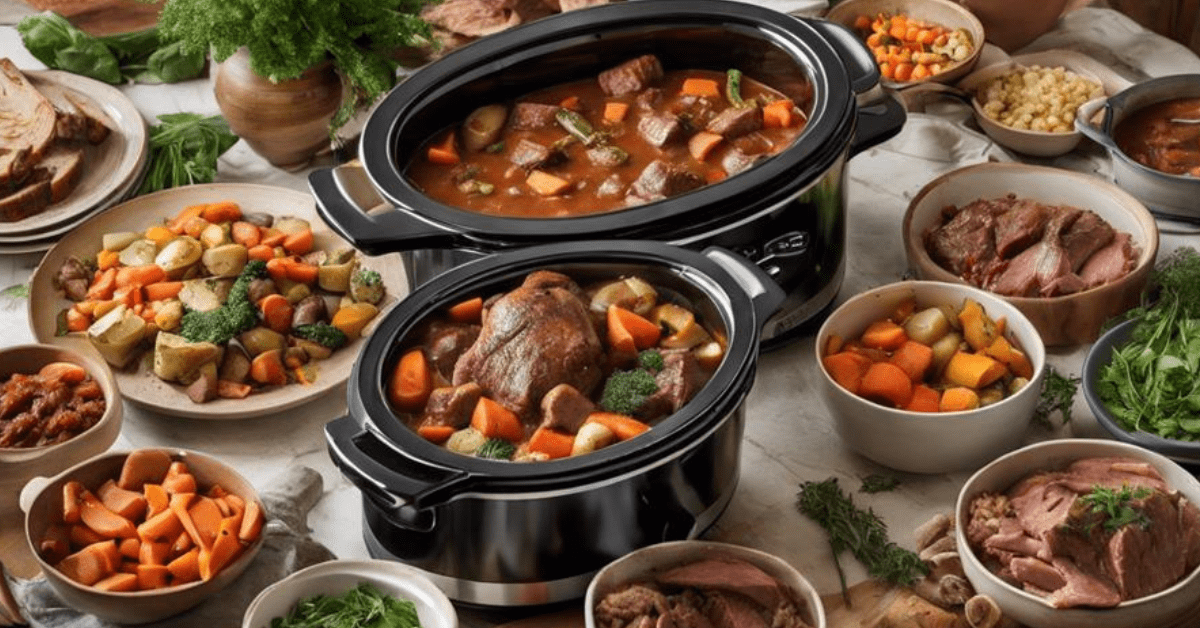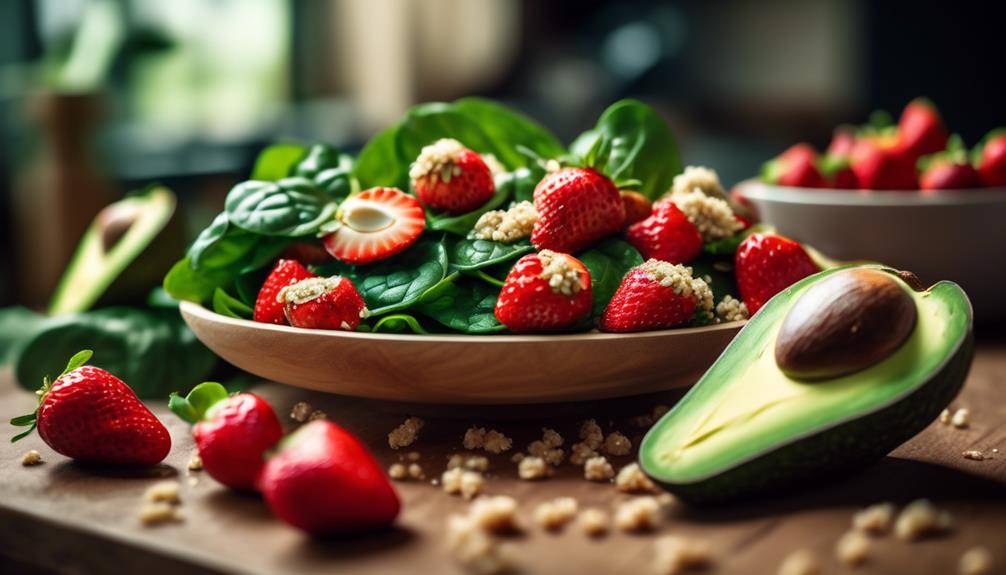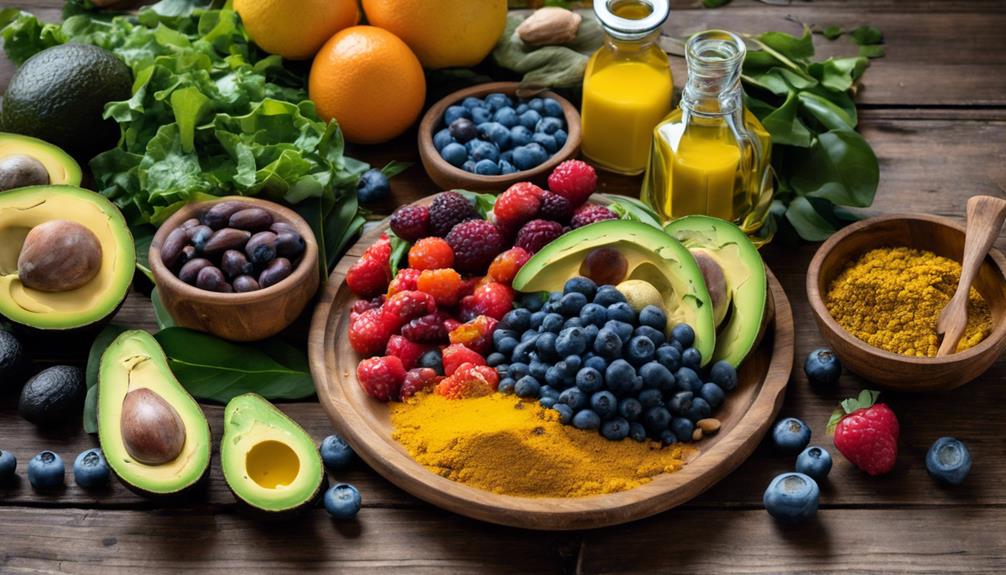The Exciting Greek Culinary Traditions And Specialties
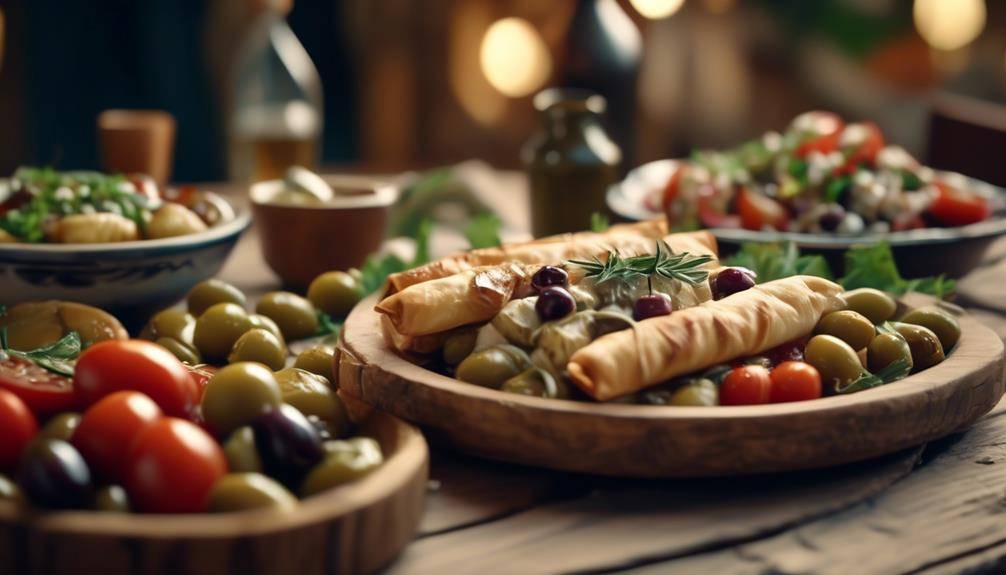
Greek Culinary Traditions And Specialties; As you sit down to enjoy a Greek meal at your favorite restaurant, the tantalizing aroma of grilled lamb and the vibrant colors of fresh vegetables transport you to the sun-drenched shores of the Mediterranean. But have you ever wondered about the rich culinary traditions and regional specialties that have shaped Greek cuisine?
From the historical influences that have shaped their flavors to the unique dishes found in different regions, the world of Greek food is as diverse and captivating as the land it hails from. So, prepare to embark on a culinary journey that will take you from the northern reaches of Greece to the southern tip of the Peloponnese Peninsula, where each bite tells a story and leaves you craving for more.
Introduction to Greek Cuisine
If you’re ready to embark on a culinary journey through the rich flavors and vibrant ingredients of Greek cuisine, this introduction will provide you with a comprehensive overview of the traditional dishes and cultural influences that shape this gastronomic tradition. Greek culinary traditions are deeply rooted in history and are known for their simplicity and emphasis on fresh, high-quality ingredients. The traditional Greek ingredients play a vital role in creating the distinct flavors that have made Greek cuisine popular worldwide.
One of the key aspects of Greek culinary traditions is the abundant use of olive oil. Greece is one of the largest producers of olive oil in the world, and it is a staple in almost every Greek dish. Olive oil adds a rich, smooth taste to dishes and is used for cooking, dressing salads, and even as a dip for bread.
Another traditional Greek ingredient that is widely used is feta cheese. Made from sheep’s milk, feta cheese is known for its tangy and salty flavor. It is a versatile ingredient that can be used in salads, pastries, and even as a topping for grilled meats.
Greek cuisine also heavily relies on fresh fruits and vegetables. Mediterranean staples such as tomatoes, cucumbers, and onions are often found in Greek salads, while eggplants and zucchinis are commonly used in various dishes like moussaka and stuffed vegetables.
Herbs and spices also play an important role in Greek cooking. Oregano, mint, dill, and parsley are commonly used to add flavor and aroma to dishes. Additionally, garlic and lemon juice are frequently used to enhance the taste of meats and seafood.
The Influence of History on Greek Food
Throughout history, Greek food has been shaped and influenced by a variety of factors, including cultural exchanges, conquests, and trade routes. The influence of ancient Greece on Greek cuisine is of great cultural significance. Ancient Greece was known for its advanced civilization, with contributions in philosophy, arts, and sciences. The Greeks valued the concept of balance, which was not only applied to their way of life but also to their food. This idea of balance influenced the types of ingredients used and the methods of cooking.
Cultural exchanges played a major role in shaping Greek cuisine. The Greeks were avid traders and established colonies throughout the Mediterranean and beyond. As a result, they came into contact with various cultures and adopted elements from them. For example, the use of olive oil, which is a staple in Greek cooking, was influenced by the Egyptians. The Greeks also incorporated ingredients such as wine, honey, and spices from other cultures, adding depth and flavor to their dishes.
Conquests also had a significant impact on Greek food. The conquests of Alexander the Great spread Greek culture and cuisine to the lands he conquered. This led to the blending of Greek and local culinary traditions, creating unique regional specialties. For instance, Greek cuisine in Asia Minor, now modern-day Turkey, showcases a fusion of Greek and Turkish flavors.
Trade routes further influenced Greek cuisine by introducing new ingredients and cooking techniques. The Greeks traded with various civilizations, including the Phoenicians, Romans, and Byzantines. This exchange of goods brought new flavors, such as spices, herbs, and exotic fruits, to Greece. Additionally, cooking techniques like baking and stewing were learned from other cultures and incorporated into Greek cooking.
Geographical Factors Shaping Greek Culinary Traditions
When it comes to Greek culinary traditions, geographical factors play a significant role. The diverse landscape, ranging from mountains to islands, has shaped the availability of ingredients and the cooking techniques used. The climate, with its warm summers and mild winters, has influenced the types of crops that can be grown and the flavors that are characteristic of Greek cuisine. Additionally, the proximity to the coast has introduced a strong influence of seafood in Greek dishes.
Influence of Landscape
The geographical features of Greece have significantly shaped its culinary traditions, influencing the ingredients, cooking methods, and flavor profiles found in Greek cuisine. The influence of climate plays a crucial role in determining the types of ingredients that are available in different regions of Greece. The country’s diverse landscape, which includes mountains, islands, and coastal areas, creates a wide range of microclimates that support the growth of various crops and produce.
For example, the warm and sunny climate of the Mediterranean region allows for the cultivation of olives and citrus fruits, while the cooler mountainous regions are ideal for growing herbs, vegetables, and grains. Furthermore, the impact of agriculture on Greek cuisine is evident in the emphasis on fresh, locally sourced ingredients. The fertile soil and favorable growing conditions have led to a strong agricultural tradition in Greece, with an abundance of fruits, vegetables, grains, and herbs being grown.
This reliance on local produce has shaped the culinary traditions of Greece, with an emphasis on simple, seasonal dishes that showcase the natural flavors of the ingredients. Overall, the geographical landscape of Greece has played a significant role in shaping the culinary traditions of the country, influencing the ingredients, cooking methods, and flavor profiles found in Greek cuisine.
Climate and Agriculture
The diverse climate and agricultural practices in Greece have profoundly influenced the development of Greek culinary traditions, shaping the flavors and ingredients that define its cuisine. The Mediterranean climate, with its mild winters and hot, dry summers, provides ideal conditions for growing a variety of crops. Olive trees, a staple in Greek cuisine, thrive in the Mediterranean climate, and their oil is a fundamental ingredient in many dishes. The fertile soil and abundant sunshine also contribute to the cultivation of fruits and vegetables such as tomatoes, grapes, figs, and citrus fruits.
Farming practices in Greece combine traditional methods with modern techniques, resulting in high-quality produce. The use of terraced fields, crop rotation, and natural fertilizers ensures sustainable farming practices and the preservation of the land. These agricultural practices, influenced by the climate and geography of Greece, play a crucial role in shaping Greek culinary traditions.
Coastal Culinary Influences
With the rich coastal resources and proximity to the Mediterranean Sea, the culinary traditions of Greece have been greatly influenced by the geographical factors of its coastline. These coastal influences have shaped the Greek cuisine in various ways, particularly when it comes to seafood dishes. Here are four key ways in which the coastal culinary influences have impacted Greek cuisine:
- Abundance of seafood: Greece’s coastline provides an abundance of fresh seafood options, including fish, shellfish, and crustaceans. This has led to the development of a wide range of seafood-based dishes that are a staple in Greek cuisine.
- Variety of cooking methods: The coastal influences have introduced various cooking methods for seafood, such as grilling, frying, and baking. Each method brings out different flavors and textures, adding depth to the overall culinary experience.
- Mediterranean flavors: The proximity to the Mediterranean Sea has also infused Greek cuisine with the flavors of the region. Olive oil, lemon, garlic, and herbs like oregano and basil are commonly used to enhance the natural flavors of seafood.
- Cultural significance: Seafood dishes hold a special place in Greek culture and are often associated with festive occasions and celebrations. From grilled octopus to stuffed squid, these dishes are not only delicious but also reflect the rich cultural heritage of Greece.
Traditional Greek Ingredients and Flavors
When it comes to traditional Greek cuisine, one of its defining characteristics is the incredible diversity of ingredients used. From fresh seafood to aromatic herbs and spices, Greek dishes are known for their vibrant flavors. Each region of Greece also has its own unique specialties, showcasing the rich culinary traditions that have been passed down through generations.
Greek Ingredient Diversity
To truly appreciate Greek cuisine, one must delve into the rich and diverse array of traditional Greek ingredients and flavors. Greek ingredient diversity is a key aspect of the country’s culinary traditions, which have been shaped by centuries of regional influences and cultural exchanges. Here are four noteworthy elements that contribute to the uniqueness of Greek cuisine:
- Olive oil: Known as the “liquid gold” of Greece, olive oil is a staple ingredient in Greek cooking. It is used for frying, dressing salads, and marinating meats, adding a distinct Mediterranean flavor to dishes.
- Herbs and spices: Greek cuisine heavily relies on herbs and spices like oregano, thyme, dill, and cinnamon. These ingredients add depth and complexity to dishes, enhancing their overall taste.
- Feta cheese: Feta cheese is a quintessential Greek ingredient, made from sheep’s milk or a combination of sheep’s and goat’s milk. Its tangy and salty taste is often used in salads, pastries, and main dishes.
- Phyllo dough: Traditional Greek cooking techniques involve the use of phyllo dough, a thin and flaky pastry. It is used to make popular dishes like spanakopita (spinach pie) and baklava, providing a delightful texture and taste.
The diverse range of ingredients and flavors in Greek cuisine is what makes it so beloved and unique. By embracing these traditional ingredients and cooking techniques, you can experience the true essence of Greek culinary traditions.
Flavorful Regional Specialties
Greek culinary traditions are further enriched by the flavorful regional specialties that showcase the diverse range of traditional Greek ingredients and flavors. Each region in Greece has its own unique culinary identity, shaped by its geographical location, cultural influences, and local produce. Regional cooking techniques play a significant role in the preparation of these specialties, passed down through generations and reflecting the cultural food traditions of each area.
For example, in the mountainous regions of Epirus, slow-cooking methods are used to create hearty stews and soups, while in the coastal areas of the Aegean islands, grilling and seafood dominate the culinary landscape. From the rich and robust flavors of Crete’s traditional cuisine to the delicate and aromatic dishes of the Ionian islands, these regional specialties highlight the diversity and depth of Greek culinary traditions.
Regional Specialties From Northern Greece
Northern Greece is renowned for its diverse and unique regional specialties that showcase the rich culinary heritage of the area. From northern Greek delicacies to traditional recipes from Macedonia, this region offers a plethora of flavors that will delight any food enthusiast. Here are four regional specialties from Northern Greece that you must try:
- Bougatsa: This delicious pastry is a staple in Thessaloniki, the capital of Macedonia. Made with layers of phyllo dough and filled with either sweet custard or savory cheese, bougatsa is a popular breakfast or snack option. The golden, flaky crust combined with the creamy filling creates a delightful contrast of textures and flavors.
- Soutzoukakia: Hailing from the city of Serres, soutzoukakia are meatballs seasoned with aromatic herbs and spices. The secret to their distinct taste lies in the addition of cumin and garlic, which infuse the meat with a rich and fragrant flavor. Served in a tomato-based sauce, soutzoukakia are typically accompanied by rice or mashed potatoes.
- Touloumotyri: This unique cheese is produced exclusively in the region of Drama. Touloumotyri is a soft, white cheese made from goat’s milk that has been aged in wine lees. The result is a creamy and slightly tangy cheese with a distinctive hint of wine. It pairs perfectly with a glass of local wine or a slice of crusty bread.
- Pies: Northern Greece is famous for its wide variety of pies, such as spanakopita (spinach pie) and tiropita (cheese pie). These pies are made with layers of flaky phyllo dough and filled with a mixture of fresh ingredients such as spinach, feta cheese, and herbs. Whether enjoyed as a snack or a main course, pies are a delicious and satisfying option.
Culinary Delights of the Ionian Islands
As we venture further into the culinary tapestry of Greece, let’s now turn our attention to the delectable dishes that await us in the enchanting Ionian Islands. The Ionian Islands, located in the western part of Greece, have a rich culinary tradition influenced by their geographical location and historical background. The cuisine of the Ionian Islands is known for its vibrant flavors, fresh ingredients, and unique combinations of flavors.
One of the key culinary traditions in the Ionian Islands is the use of local ingredients. The islands are blessed with fertile soil and a mild climate, which allows for the cultivation of a wide variety of fruits, vegetables, and herbs. Olive oil, garlic, onions, and tomatoes are staples in many traditional recipes, adding depth and richness to the dishes.
Seafood also plays a prominent role in the Ionian cuisine. With the islands surrounded by the crystal-clear waters of the Ionian Sea, it is no wonder that fish and seafood are abundant. Traditional recipes often feature dishes like bourdeto, a spicy fish stew, and kakavia, a flavorful fish soup. These dishes highlight the freshness and quality of the seafood available in the region.
Another culinary delight of the Ionian Islands is their sweet treats. The islands are famous for their delicious desserts, such as pasteli, a sesame seed and honey bar, and mandolato, a nougat-like confection made with almonds and honey. These sweet treats are often enjoyed with a cup of Greek coffee or a glass of local liqueur, such as kumquat liqueur from the island of Corfu.
Exploring the Tastes of the Aegean Sea
In our exploration of the culinary wonders of Greece, let us now delve into the tantalizing flavors that emerge from the bountiful Aegean Sea. The Aegean Sea is known for its rich marine biodiversity, providing an abundance of fresh seafood that is central to the traditional island recipes of the region. Here are four must-try dishes that showcase the exquisite flavors of the Aegean Sea:
- Octopus Stifado: This hearty stew features tender octopus cooked with onions, garlic, tomatoes, and a medley of aromatic spices. The slow cooking process allows the flavors to meld together, resulting in a dish that is both savory and comforting.
- Grilled Sea Bass: The Aegean Sea is home to an array of delectable fish, and one of the best ways to enjoy them is by grilling. A whole sea bass, marinated in olive oil, lemon juice, and herbs, is grilled to perfection, resulting in a moist and flavorful fish that melts in your mouth.
- Shrimp Saganaki: Served in a rich tomato sauce with feta cheese, this dish combines the sweetness of shrimp with the tanginess of tomatoes and the creaminess of feta. The flavors come together beautifully, creating a dish that is both indulgent and satisfying.
- Fried Calamari: Crispy on the outside and tender on the inside, fried calamari is a beloved Aegean seafood dish. The squid is coated in a light, seasoned batter and quickly fried to preserve its delicate flavor and texture.
Exploring the local seafood and indulging in traditional island recipes is a must for any food lover visiting the Aegean Sea. From succulent octopus stifado to crispy fried calamari, the flavors of the Aegean Sea will leave you craving for more.
Mediterranean Influences in Southern Greek Cuisine
The culinary traditions of southern Greece are deeply influenced by the flavors and ingredients of the Mediterranean region. The Mediterranean diet, known for its emphasis on fresh fruits, vegetables, whole grains, and olive oil, is a cornerstone of Greek food culture. In southern Greece, this diet is celebrated and adapted to create regional specialties that showcase the unique flavors of the area.
One of the defining characteristics of Mediterranean cuisine is the use of fresh, local ingredients. In southern Greece, this means an abundance of seafood, as the region is surrounded by the Aegean Sea. Fresh fish, such as sardines, anchovies, and sea bream, are popular choices and are often grilled or baked with herbs and olive oil to enhance their natural flavors. Octopus and squid are also commonly enjoyed, either as a main dish or in meze, small plates served as appetizers.
Another Mediterranean influence in southern Greek cuisine is the use of herbs and spices. Oregano, thyme, and rosemary are commonly used to add depth and aroma to dishes, while garlic and lemon provide a burst of flavor. These ingredients, along with the use of olive oil as a cooking and seasoning agent, contribute to the distinctive taste of the region’s cuisine.
In addition to seafood and herbs, southern Greek cuisine also incorporates other Mediterranean staples such as olives, feta cheese, and yogurt. These ingredients are used in a variety of dishes, from salads and dips to main courses and desserts. The combination of these ingredients, along with the emphasis on fresh, seasonal produce, creates a balanced and nutritious cuisine that is not only delicious but also promotes good health.
Unique Dishes From the Peloponnese Peninsula
After exploring the Mediterranean influences in southern Greek cuisine, it is time to uncover the unique dishes that originate from the Peloponnese Peninsula. The Peloponnese Peninsula, located in southern Greece, is known for its rich culinary heritage, with a variety of traditional recipes that have been passed down through generations. Here are four unique dishes from the Peloponnese Peninsula that are sure to tantalize your taste buds:
- Kalamata Olive Salad: Made with the famous Kalamata olives, this salad is a staple in Greek gastronomy. The olives are combined with fresh tomatoes, cucumbers, feta cheese, and a drizzle of extra virgin olive oil, creating a refreshing and flavorful dish.
- Manouri Cheese: This soft, creamy cheese is made from sheep’s milk and has a delicate, slightly tangy flavor. It is often served as a dessert, drizzled with honey and sprinkled with chopped walnuts.
- Pastitsio: A beloved Greek comfort food, pastitsio is a baked pasta dish made with layers of tubular pasta, minced meat, béchamel sauce, and grated cheese. It is a hearty and satisfying dish that is perfect for any occasion.
- Loukoumades: These sweet, deep-fried dough balls are a popular dessert in the Peloponnese Peninsula. They are typically served drizzled with honey and sprinkled with cinnamon, creating a delightful combination of flavors.
These unique dishes from the Peloponnese Peninsula are a testament to the rich culinary traditions of Greece. Whether you’re a fan of savory salads, creamy cheeses, comforting pasta dishes, or indulgent desserts, the Peloponnese Peninsula has something to offer for every palate. So, next time you find yourself in Greece, be sure to explore the traditional recipes and flavors that this region has to offer.
Frequently Asked Questions: Greek Culinary Traditions And Specialties
What Are Some Popular Greek Desserts?
Some popular Greek desserts include baklava, loukoumades, and galaktoboureko. These sweet treats are made using traditional Greek dessert recipes and are often enjoyed alongside a cup of Greek coffee or a glass of ouzo.
How Do Greek Culinary Traditions Differ From Other Mediterranean Countries?
When comparing Greek culinary traditions with other Mediterranean countries, Greek cuisine stands out for its unique flavors, fresh ingredients, and emphasis on simplicity. Its use of olive oil and herbs adds a distinct taste to dishes.
Are There Any Vegetarian or Vegan Options in Greek Cuisine?
In Greek cuisine, you’ll find a variety of vegetarian and vegan options. Compared to other Mediterranean countries, Greek culinary traditions offer a range of plant-based dishes using fresh vegetables, legumes, herbs, and olive oil.
What Are Some Famous Greek Wines That Pair Well With Greek Dishes?
Some famous Greek wines that pair well with Greek dishes include Assyrtiko, Xinomavro, and Agiorgitiko. These wines come from different Greek wine regions and offer a variety of flavors and aromas to enhance your dining experience.
Can You Recommend Any Traditional Greek Cooking Techniques or Methods?
You can learn various traditional Greek cooking techniques to enhance your culinary skills. These methods have been passed down through generations and are rooted in Greek culinary traditions.
Conclusion
Overall, Greek cuisine is a rich tapestry of flavors, influenced by its history, geography, and regional specialties. From the hearty dishes of Northern Greece to the seafood delights of the Ionian Islands and the Mediterranean influences in Southern Greek cuisine, each region has its own unique culinary traditions. Whether it’s the vibrant flavors of the Aegean Sea or the distinctive dishes from the Peloponnese Peninsula, Greek cuisine offers a diverse and delicious culinary experience that is sure to satisfy any palate.



